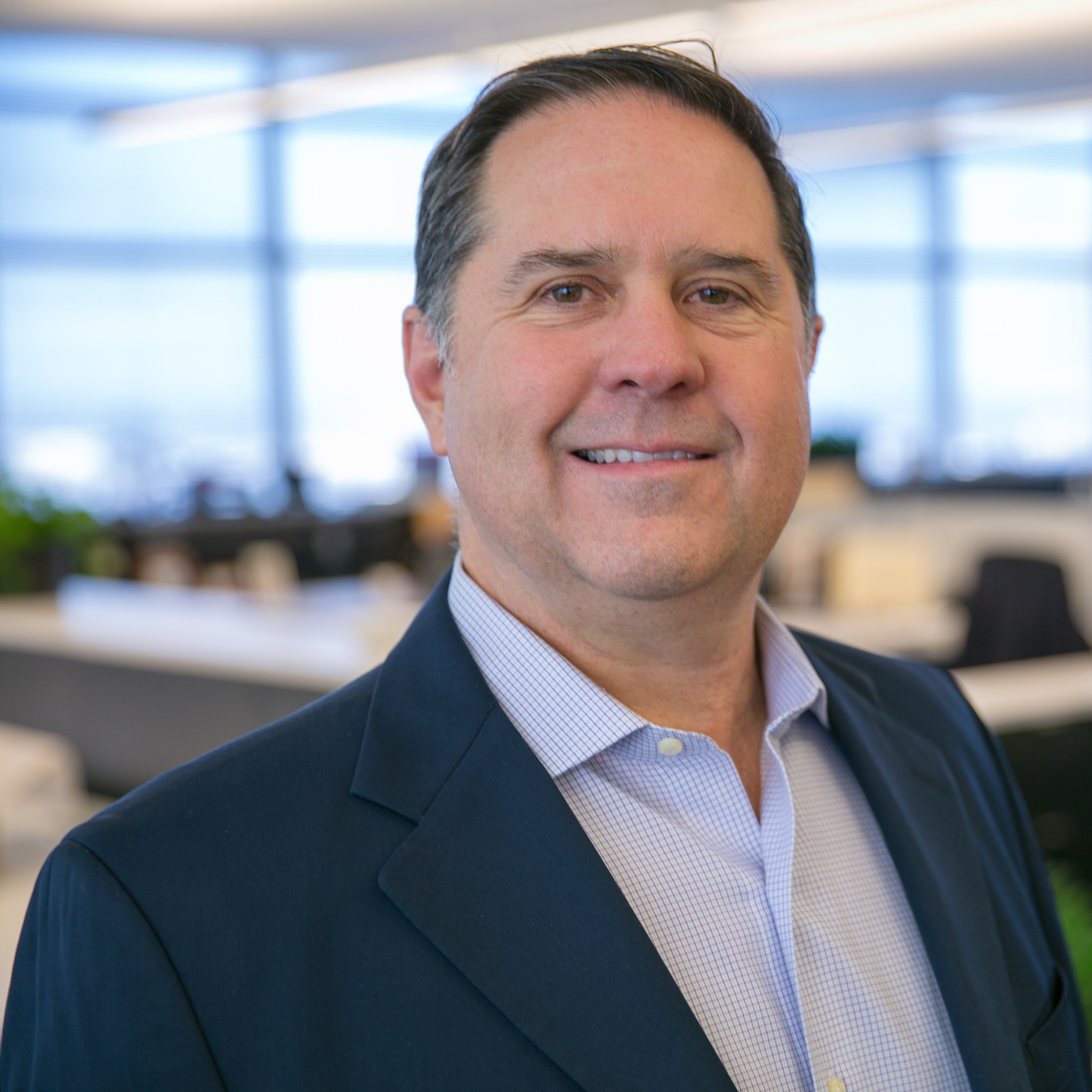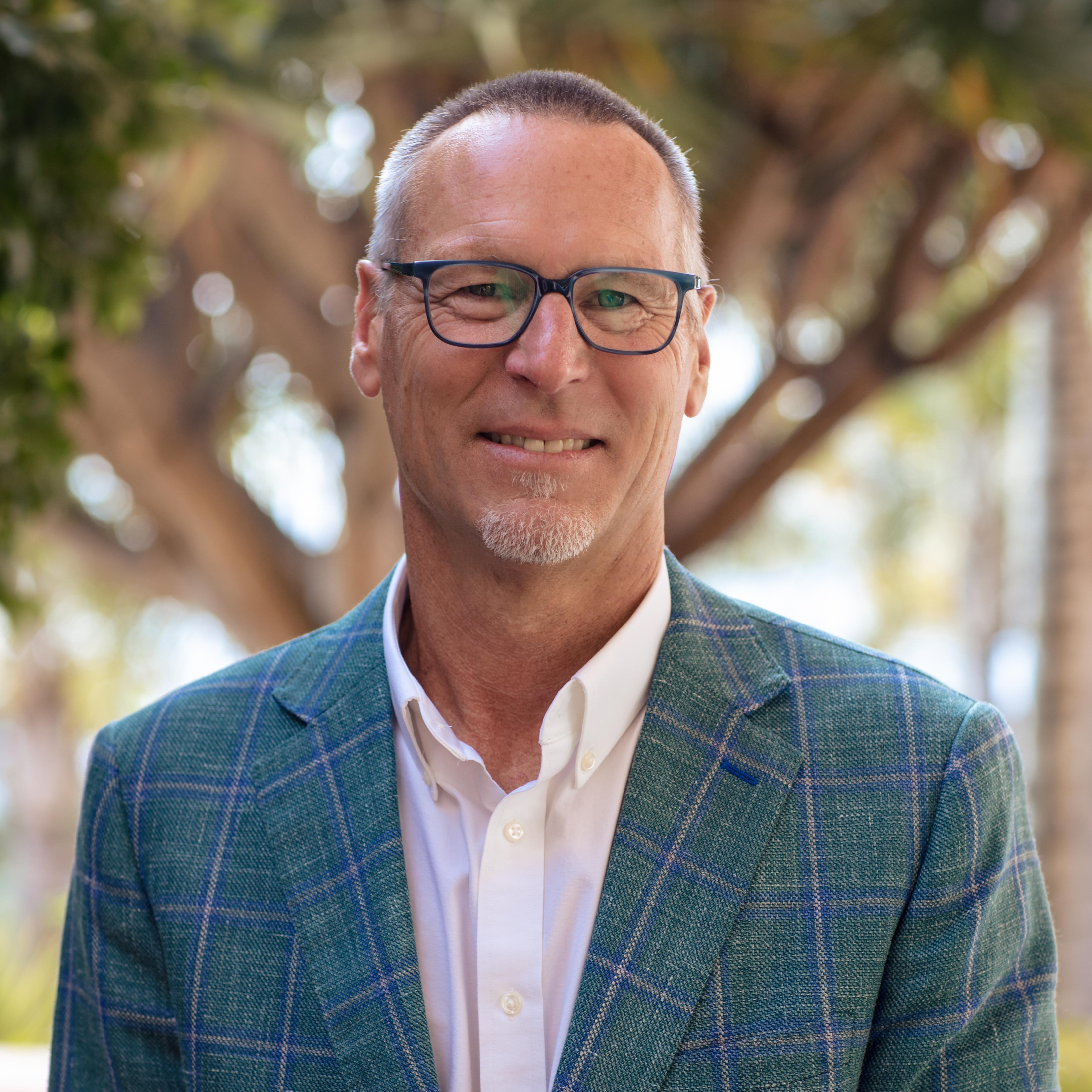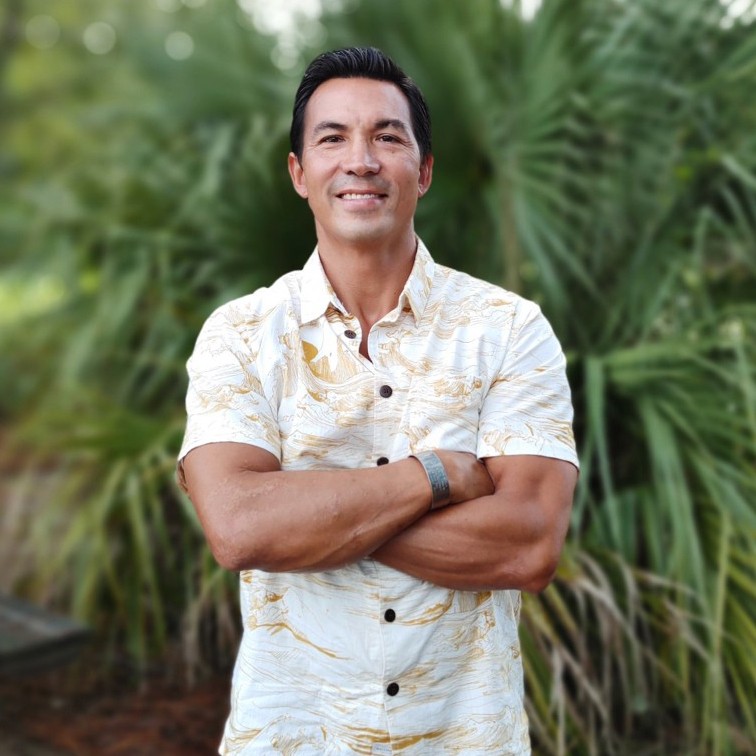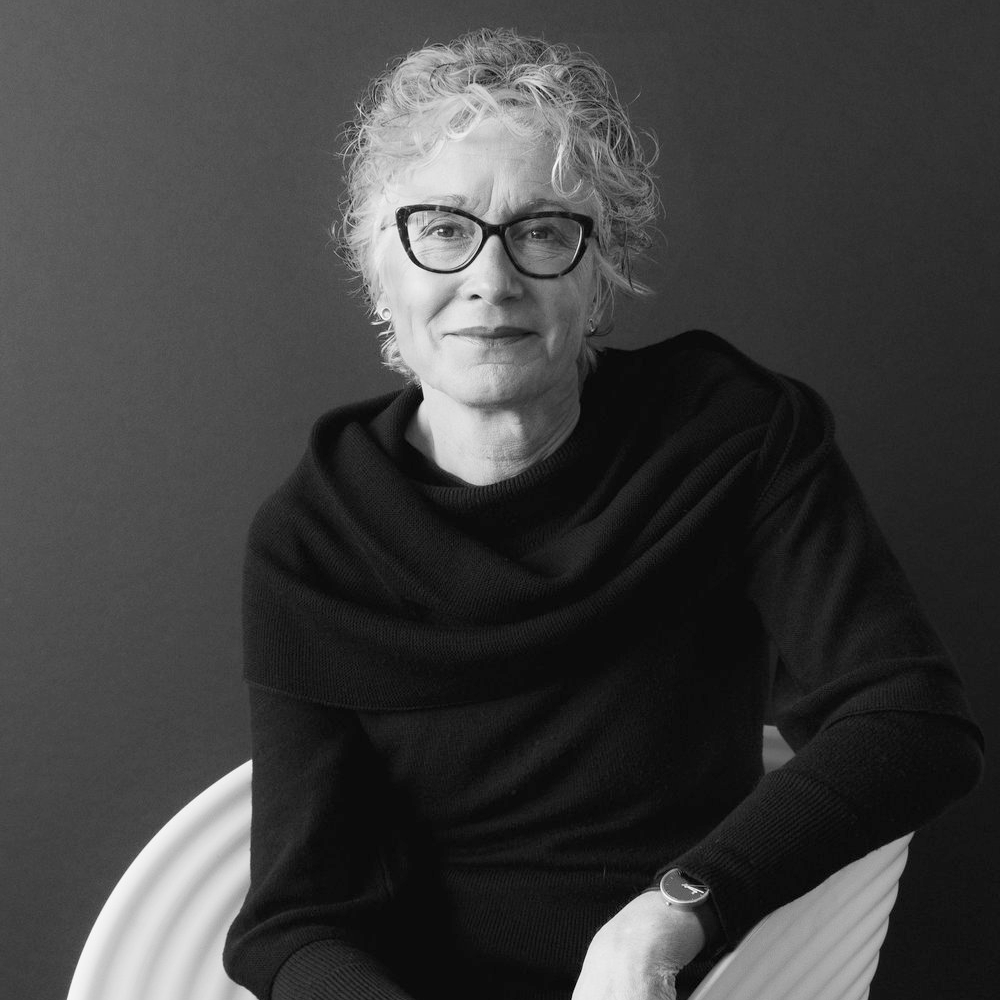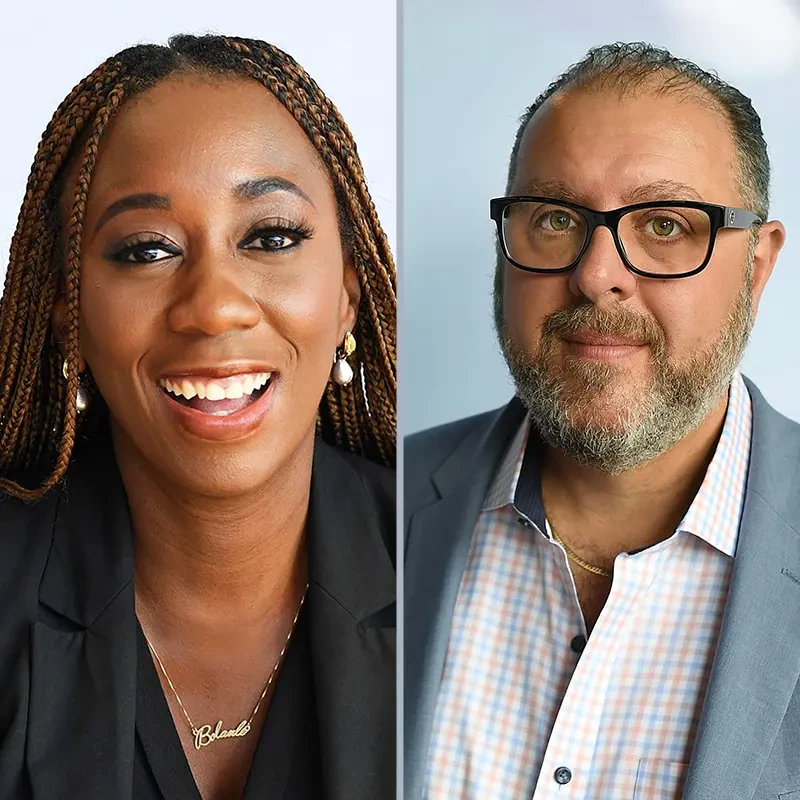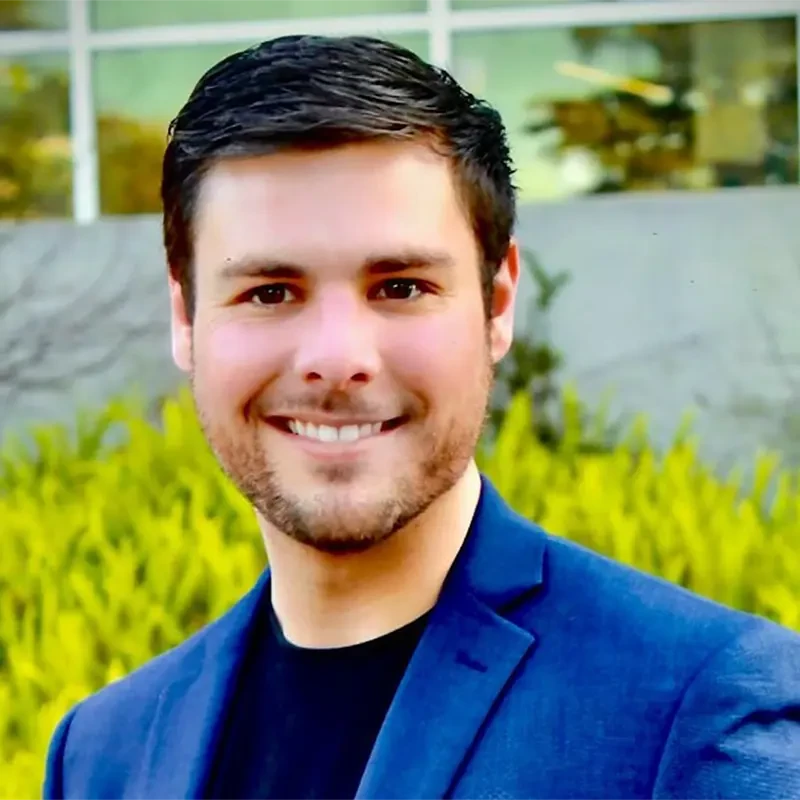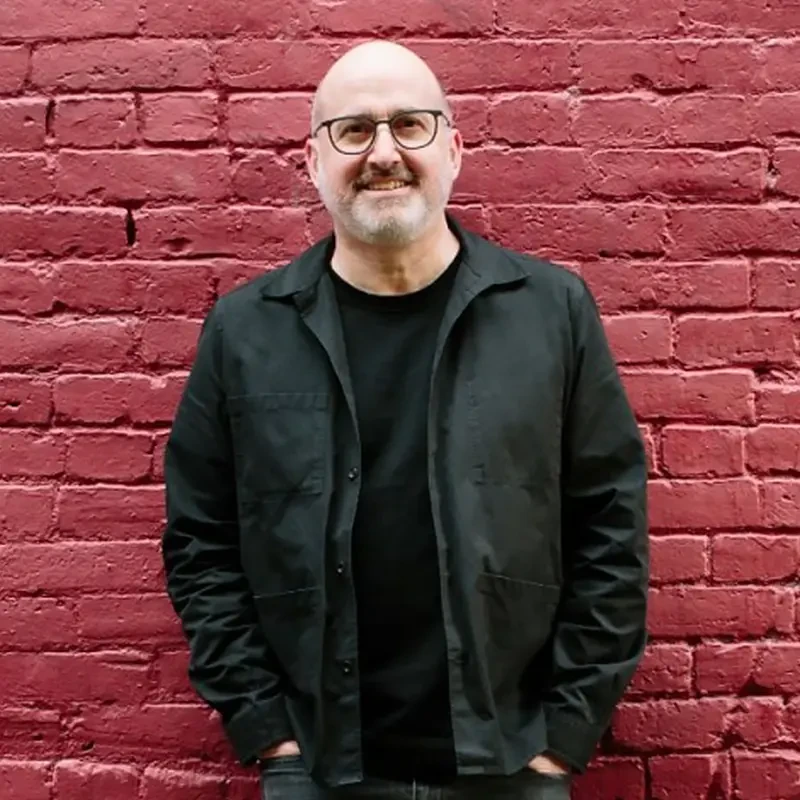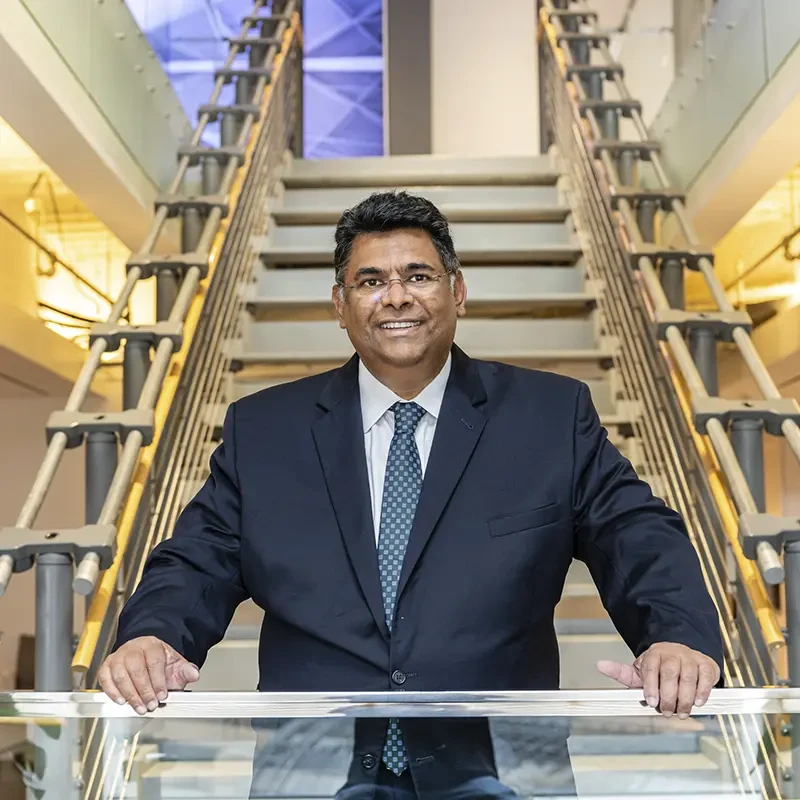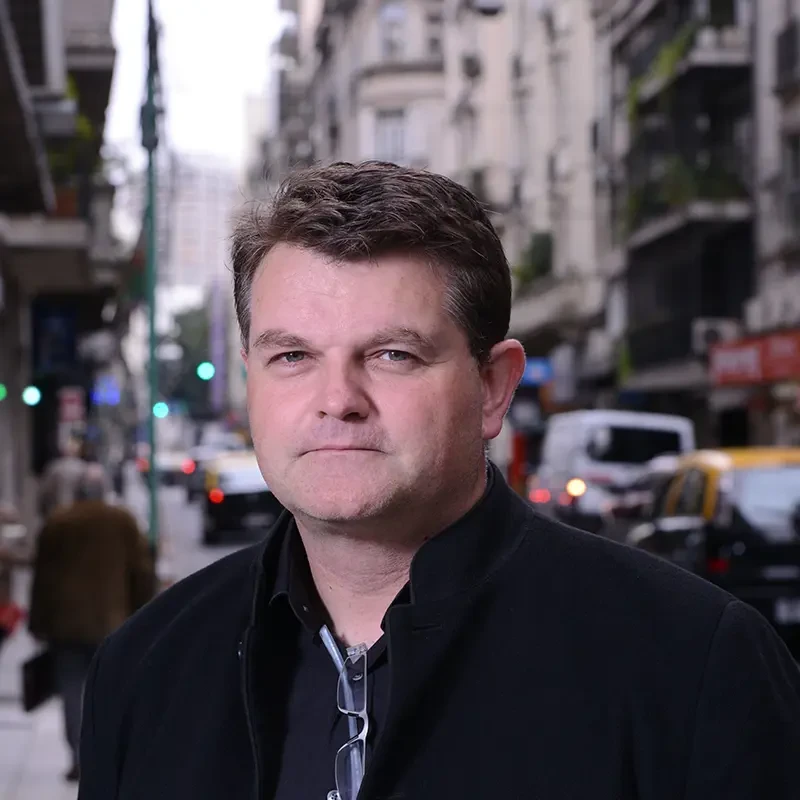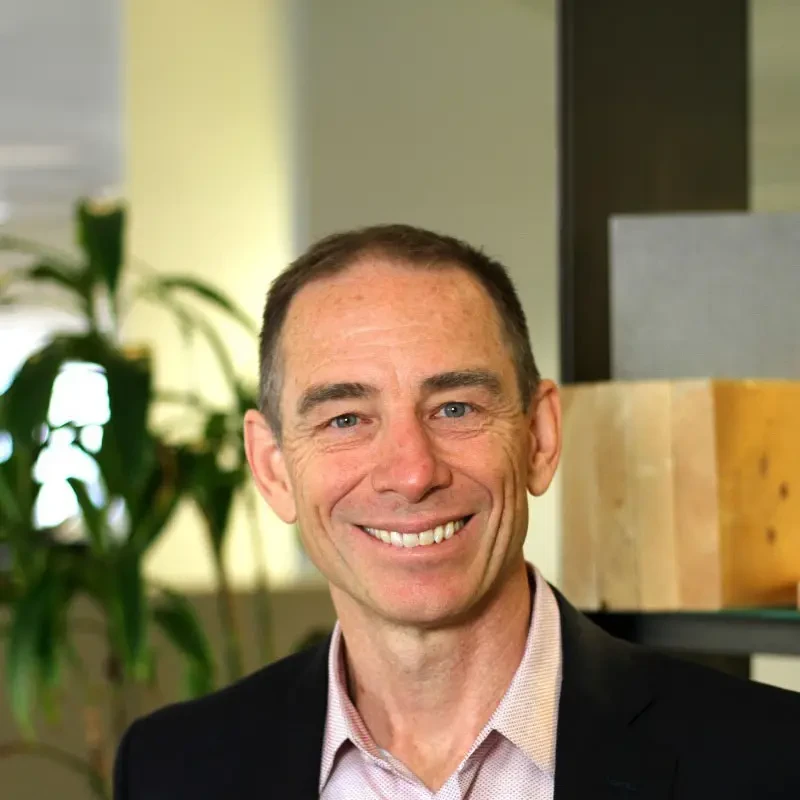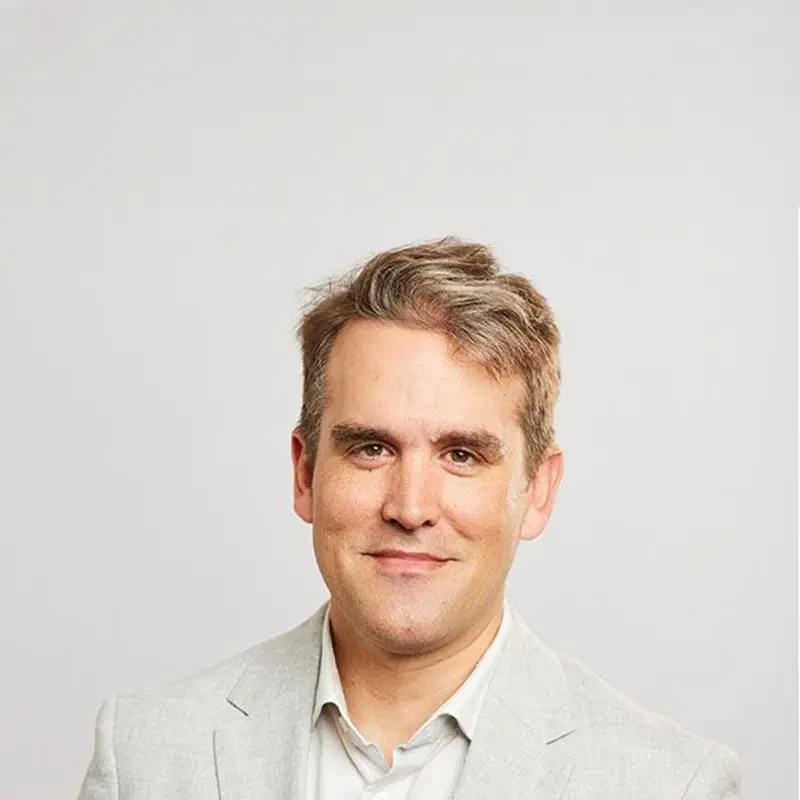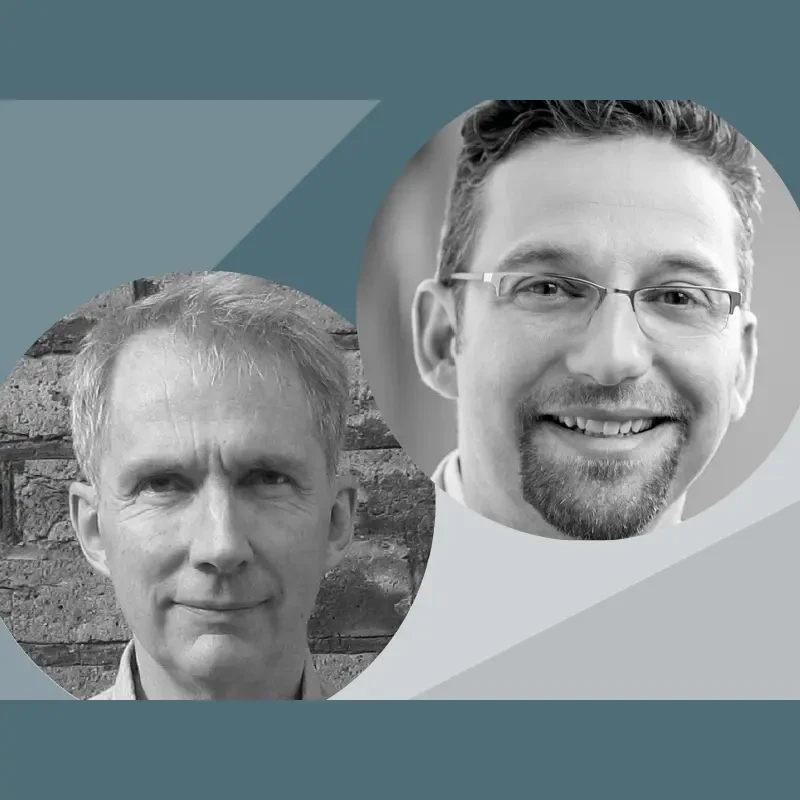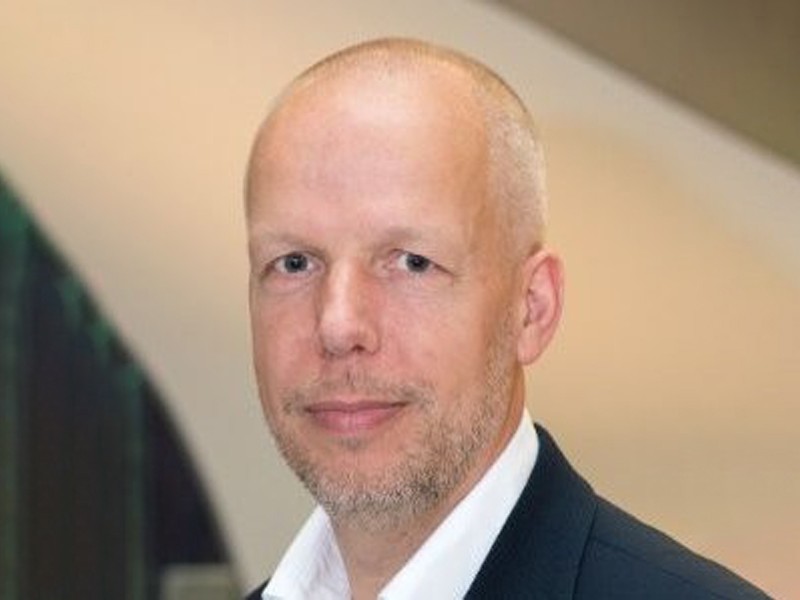
Changing the Game
Roger Krulak
Founder and President of FullStack Modular
February 7, 2024
FullStack Modular President and Founder Roger Krulak discusses modular construction.
DesignIntelligence (DI): We’re delighted to have Roger Krulak, president and founder of FullStack Modular (FSM), a man determined to solve the U.S.’s housing crisis. Roger is the “OG” in modular, a visionary shaping the future of urban development. A global expert in modular building, he’s a guest lecturer at Yale, Harvard and MIT. His company was based in the Brooklyn Navy Yard for years and recently relocated to Hamden, Connecticut. The FullStack Modular method resembles the Lego concept — it clicks together, stack it up and add a roof! Welcome to the conversation, Roger.
Roger Krulak (RK): Thank you so much, Michael. Nice to be here.
DI: It’s great to have you. You have taken on one of the great social problems of our time, the housing shortage. Over hundreds of years, many great minds have struggled with this issue — with limited success. Why are you taking this on? Why you? Why now?
RK: I don’t know whether I’ve taken it on or just fallen into the desire to do it. I am extraordinarily passionate about the solution — and the problem. It’s inconceivable to me that in a country as wealthy as ours, people are struggling with housing. It makes no sense. From a social perspective, I am also interested in the fact that, as the biggest industry in the world, we fail at achieving efficiency. I have spent time trying to figure out how to reduce waste and increase productivity. For so long in the United States, the focus has been on lowest cost and return on cost, as well as government handouts to make projects work, even though many don’t work economically as assets.
The AEC industry has gone down a destructive path. We’ve evolved to meet the needs of an industry that has been misdirected for a long time. I’m a self-proclaimed impatient person, and I can’t stand waste of time or material. Since 2007, I’ve been trying to create high-quality, cost- and time-efficient solutions for the dense urban environment. I’ve spent my career working in the built world in New York, and I believe cities have a huge responsibility — but also a vast capacity — to address housing, climate change and other social issues. That’s my motivation.
DI: Tell us about your background, your education, how you got here. Are you an architect, a builder, a manufacturer or all the above?
RK: I tell my engineer I’m a professional hack who tries to solve problems I see without fully knowing how to execute them . I have a business degree and grew up in the construction and development industry. As my career evolved, I was a partner in a company that built and designed data centers, so early on, I saw a lot of construction technology. We were doing BIM modeling in 1992, and I became interested in construction technology. Then, the dot-com industry crashed and there wasn’t much industry left. So, I returned to the residential development industry in New York. During that time, the pace was feverish. I was working at Forest City Ratner Companies, which committed to building 6,500 affordable apartments in Brooklyn. Given the construction market volatility at the time, there was no way to build them conventionally, with any time and cost efficiency. Then, the bottom fell out of the economy. It was 2007, what were we going to do? So, I was fortunate to have a world-class team designing a solution to build high-rise modular buildings in dense urban environments. That’s how FullStack Modular started.
DI: That explains a lot. You need only be involved in the construction industry briefly before you’re ready to devote your life to transforming it.
RK: That’s accurate. The good news is there is now a lot of money and evolving technology, creating an opportunity for change that didn’t exist ten years ago. A considerable venture capital market specifically focused on construction technology is currently looking to deploy capital. As we speak, I’m at the Built Worlds convention in Chicago, which has been discussing construction technology since 2014. We spoke last night about how things have evolved. There are enormous opportunities for significant investment if you find ways to meet the current and future market needs.
DI: How did go about building your team with the technical expertise to accomplish your vision?
RK: Don’t get me wrong, I’m pretty geeky. In 2014, David Farnsworth from Arup, the structural engineer I’ve worked with for years and I received the Breakthrough Award from Popular Mechanics magazine. I’m not an engineer or an architect, but I often lecture at graduate design schools like Harvard, MIT and Yale. My view was that we were doing something wrong as developers in dense urban environments. As an industry, we currently pretend every building is different and use an overly complicated and disintegrated process to build buildings which is frustrating.
Everybody in the business is frustrated by its complete disorganization. You would never create anything else in the world the way we build buildings. I was fortunate to get some research and development money to hire a team, which included engineers from Arup, fantastic teammates, a modular consulting company and advice from large plumbing and electrical contractors to create a thesis we could test. We wrote a 600-page research paper on which system is the best to meet the needs of the urban environment. Much of what we focused on was antithetical to conventional construction wisdom.
We turned many things upside down, which is where many of our solutions were born. For example, our buildings are 100% bolted together, whether five or 50 stories. There’s no welding done in the field. I remember the conversation with David Farnsworth. He said, “That’s going to be a lot of bolts.” I said, “I don’t care.” We want it to be an erector set that can easily be assembled. We can’t rely on highly skilled people doing field welding and inspecting it. All the components we’ve created, including a self-sealing facade, have been focused on increasing the safety, speed and quality, while embracing industrialization - like every other industry in the world.
DI: Construction is the rare industry in which we think every product is different. I’m always asking why. When I went to architecture school, our mindset was that every building starts anew, and we champed at the bit to reinvent the wheel every time. There’s lip service paid to modularization, but the minds of the typical architect are clearly on the left side of that spectrum.
RK: 100%.
What we ask upfront is that you share agency with the system designed to have the freedom to create …
DI: You are at the right on that continuum, but is there a middle? For people with culture and minds like mine, excited about the one-off, who foolishly think they can come in as a lone wolf, genius first-timer and solve a problem better than all who came before, can those people adopt the principles of modularization?
RK: That’s such a good question. I love architecture and most architects. When I speak to graduate students, I say: To create the built environment as an architect, you must adhere to a whole set of parameters, including code, comfort and other program requirements. In the multifamily sector, there are other parameters to adhere to that exist before our solution is even part of a discussion. The developer wants to maximize the efficiency and use. What we do at FullStack Modular is layer on another set of parameters that do not diverge from the project’s primary goals.
What we ask upfront is that you share agency with our system designed to have the freedom to create a building without worrying about many of the details, how it goes together, how the MEP is distributed or how the structure’s going to work. If the team can embrace that, the process is quite effective. I want every modular building to look beautiful and be as unique as possible. Using a modular system to create the built environment is a different process because it’s a set of tools beyond those the AEC industry is accustomed to.
DI: In every case, the unit, the container and the system are set. But are there cases where, having bought into those two ideas, people have added skins or custom-built aspects?
RK: Not every building wants to be modular. Buildings have many uses and applications. Some, like residential spaces or hospital rooms, are easily made using modular solutions. On the other hand, a long-span ballroom is not easily conducive to a volumetric modular solution. Part of the process of imagining the building is identifying the program, just like in any other design process. Then, ask what’s the best process to realize the proposed program - it may or may not be a modular solution.
We do plenty of custom work when it’s appropriate. In the finishes we use, even the facade is flexible as to what it can look and feel like. The ability to adjust the building through cantilevers and setbacks is broad. Two things must happen. First, the only way this works effectively is in a design-build process. This doesn’t work: “I’m using this toolkit, and I’m going to design a building, and then I’m going to send it out to six or seven modular manufacturers and hope it goes well.” That’s not the way it works. You need to design using shared agency from the beginning with a team you trust.
Once that happens, if the team decides on the primary goals — for instance, “I want it to be the most unique-looking modular building ever” — that’s one thing. If the team wants it to be cost-effective, that’s another. You must decide what’s important.
DI: I can relate. The first time I ever worked with a contractor, I realized how little I knew and how much help I needed. When I finally did my first collaborative CM-at-Risk project, there was no turning back. Working together is a vastly superior method.
You said you’re doing multifamily and hospital rooms. Who is your target audience and building type?
RK: Our three primary markets are multifamily (affordable, attainable, or market-rate), student housing and hotels.
Some things fit that process effectively, like hospital rooms. Whether that’s to go on top of operating theaters in a hospital or a mobile hospital, you can manufacture and set up anywhere in a few hours and then move to a new location that also fits our system well. Restaurants in parking lots and shopping centers with two or three mods also work well with our process.
We shine at building above eight stories because you can’t build that out of wood in a non-high-seismic location up to 45 stories. Eight- to 20-story buildings are our sweet-spot, but we have a lot of variability. Right now, we’re building on both coasts with factories in Hamden, Connecticut, and Portland, Oregon.
DI: There have been attempts at industrialized, mass-produced housing since World War I, both in the private sector and under governmental guidance, with limited success and momentum. Yet, you tackle it. Why is your system, FullStack, a solution? How it is different, and what are the advantages?
RK: There are so many answers to that question. The reality is that the industry is failing to meet a need. In the U.S., we need at least seven million housing units today. As an industry, we don’t build a million housing units a year, not even close to what is currently needed. My answer to your question is that necessity does create innovation if somebody’s paying attention. The technology in our industry has now evolved to a point where it is possible to build efficiently in a factory and be aware of the metrology, the theoretical size and shape of the building in a way that wasn’t possible a decade ago. Ten years ago, if you were building aerospace products, you would spend the energy and money necessary to check the metrology, the model-based surveying. Today, you can buy a $30,000 laser, take a YouTube class and get a precision layout within two thousandths of an inch and know your X, Y and Z coordinates are accurate within microns.
With the addition of AI, you can say, “This is how I want the rooms,” and it’ll complete the details for you. A modular building has thousands of pages of documents, even for a relatively small building, and it is expensive to create. But now it doesn’t have to be because you can run Dynamo scripts, and you don’t need 40 drafters, you need four. That’s happening simultaneously and accelerating opportunities with less required investment to create the information needed.
Manufacturing itself is not complicated. Creating the rules, the system and the process to manufacture and implement the quality assurance and program is complex. We manufacture almost everything around the world without highly skilled people. Finally, the AEC industry also has the tools to support this effort.
The other day I was in a meeting, and I said, “You are reticent to embrace modular construction, but what in the building is not manufactured? What tool is not manufactured? Who says the building can’t be manufactured as well?”
The reality is that the industry is failing to meet a need.
DI: The development of the new digital tool set has been a catalyst. You mentioned people. Who are your mentors and your tribe? Do you have a team of like-minded experts who inspire, aspire and push you to higher levels?
RK: I have an incredible team at FullStack Modular, a chief operating officer and controller who’s been with me forever and a fantastic construction technologist on the manufacturing side. I was fortunate enough to spend some time in the early days with a manufacturing expert, Roger Breedlove, who was a fantastic teacher. My grandfather was involved in a modular company in the ‘70s and he understood the value. David Farnsworth and the whole team at Arup have been with us in lockstep since 2007, working on this solution, evolving it, improving it, and adjusting it so that it is responsive, intelligent and logical.
DI: It’s incredible to see how often there are generational roots that drive people who have the courage to change the industry.
RK: I’ve been thinking about that a lot.
DI: We talked about tools, process and people. Another word that comes to mind is policy. You probably didn’t get into this business because you were a politician, a legislator or a crusader, but what percentage of your time is spent trying to change policy and delivery approaches versus running your business to implement your vision?
RK: I’m trying to change policy, but the process we use is not meeting the market needs, and as such, it needs to evolve. But I’m not sure it needs to evolve by pressuring jurisdictional authorities to change. After years of effort, I think it’s a better shot to lead by doing, to simply show how it’s done and demonstrate solutions in ways beneficial to all stakeholders. Then, I hope policy will change to meet it. The way we finance affordable housing right now is not working. We create some affordable housing but not nearly enough, and it often requires using the credit of the jurisdiction, which decreases the potential funding available for others.
The buildings built under this system generally yield low to no value. They don’t help the communities they’re built in. Policy is going to adopt whatever creates a solution, and we’re forging ahead trying to do that. Communities have money, but they don’t know how to spend it. The amount of money available to create affordable housing where they can’t figure out how to spend it effectively is astounding. As a businessman, if I have a solution that makes things better, faster, safer, and more cost-effective I will pursue it.
DI: I’m with you. Politics is not why I got into this business. I love the doing and the problem-solving. Politics aside, let’s talk about persuasion. The aesthetic of shipping containers can carry a stigma to conventional audiences. How and where did you develop your skills in presentation and persuasion?
RK: We’ve decided to march ahead and do it ourselves with partners because I don’t want to try to convince anybody. We’re just going to do it ourselves to show how it’s done and bring others along with us. We’re not trying to do it as mavericks, alone. That’s our view as an industry of what drives the modular movement forward.
My elevator pitch on why you should use modular construction is good, but there are so many stakeholders in a broken process that even if you get the head developer who has the money, he still has to listen to many skeptical stakeholders. The more modular buildings we build, the more exciting it is for everybody. They’re all watching and anticipating failure.
You are reticent to embrace modular construction, but what in the building is not manufactured? What tool says the building can’t be?
DI: You’re taking control of your destiny by using a more integrated process. Your team is in control of more aspects, so you maybe have to do less convincing. In that light, breaking some of these systemic disintegration problems, are any new economic models and investments accelerating what you’re doing? If we’re continuing to pursue one-off solutions, we’re solving the wrong problem. Do we need to be looking at new strategic alliances, new economics and new incentives?
RK: Our process is highly sustainable, repeatable and effective, and several U.S. finance programs are now focused on those things. We are trying to collaborate with these funding programs, whether it’s the Department of Energy’s desire to decrease kilowatt hours or the Department of Transportation’s encouragement to build transit-oriented developments. These programs are incented to find solutions because the status quo is not working. We’re talking to several states right now whose housing departments are interested in solutions that create what they need because they hear about the need every day. Hopefully our process is a tool in their toolbox to begin chipping away at solving the overwhelming need for more housing.
DI: Working in the modular sector must entail a set of considerations unfamiliar to most design professionals, the one-off architects and builders. What lessons would you share with that community? Principles that might be scalable or useful to others not practicing in the modular world? What new ways of thinking do they need to adopt, from your perspective?
RK: It’s clear that the only real way to design and build effectively is through a design-build process. As a design professional, you must be willing to share agency within a system, and that system often includes many opportunities. It includes the flexibility to design, but also structural systems designed and coordinated and MEP distribution that is already designed and coordinated. They’re not inflexible, but they are established systems. We build from the inside out. Each of our modules is a piece and part of the whole building, structurally, mechanically, electrically, and plumbing and it relates to all the adjacent pieces.
How do all those pieces come together to make something that will meets the users’ needs, satisfy the architect’s creativity and be responsive to the environment? That’s a huge opportunity for the design professional and an efficient process. In the last year, I have had conversations with potential design team members. At the end of those conversations, I’ve called the developer and said, “You’re welcome to use this architect, but I’m not going to be part of it.” Not that they’re not good architects, they’re just not willing to embrace this design-build process.
DI: Having practiced for decades, I find it shocking how hard it is to get the design community to adopt and embrace what I would call “design-systems thinking.” One of my last projects was the new Atlanta Falcons Mercedes-Benz Stadium. We were under the gun for cost and schedule. All the toilet rooms and concession stands in that building could have been modularized and set in place to save time, but the mindset and the desire were absent. What a missed opportunity. Yes, we want them to be beautiful and function, but they’re bathrooms! The needs are familiar and so are the solutions. In school, we’re indoctrinated to believe that we’re the choreographers of the band and we should be able to use systems thinking, but it’s just not taught. If we’re not capable of thinking it or wanting it, we aren’t going to do it.
RK: There’s more to it than that, Michael. FSM has worked with companies that have already designed a modular bathroom system with nine interchangeable components they can customize. The problem in the AEC industry is that there are always one or two team members going through the motions, who are really using subterfuge to stop this from happening. For instance, the MEP engineers design a system that could never integrate with a modular solution and forge ahead because they don’t embrace the modular approach.
It’s not as innocent as you say it is; a lot of subterfuge goes into trying to kill the process. I’m fortunate enough to be in New York, so I see a lot of big players and projects. Too often, part of the team is not interested, and they do everything they can to kill it. For example, why not utilize modular bathrooms in a commercial building where all the plumbing is stacked? It makes no sense.
DI: Your point is so good. It starts with the mindset and the desire, but beyond a theoretical level, there are counterincentives and motivations. They don’t want to do it because they’re not going to be able to line their pockets as much or because of inertia or their belief systems, and all kinds of conflicting forces get in the way of full buy-in to a modular approach.
What’s your dream? A vision for your company or its impact?
RK: We are a fully volumetric steel-based modular solution, focused on mid- to high-rise. The wood world of modular construction, five stories or under, is a mature industry happening everywhere all the time. Our segment of the industry is growing and is a viable solution to problems society has not been able to solve. I encourage people to embrace that idea so we, as a society, can find solutions to the problems we’ve been chronically plagued with and have not yet solved.
My vision for FullStack Modular is that sometime in the not-too-distant future, we would like to be able to provide support for designing and manufacturing buildings anywhere — for lack of a better term, a franchise opportunity where we could allow manufacturers in Africa, for example, to build a factory using our systems and processes and manufacture using local labor. The idea of being able to do this locally is a huge opportunity. If you involve, train and hire local workers in the areas where the housing is needed, there’s a huge opportunity.
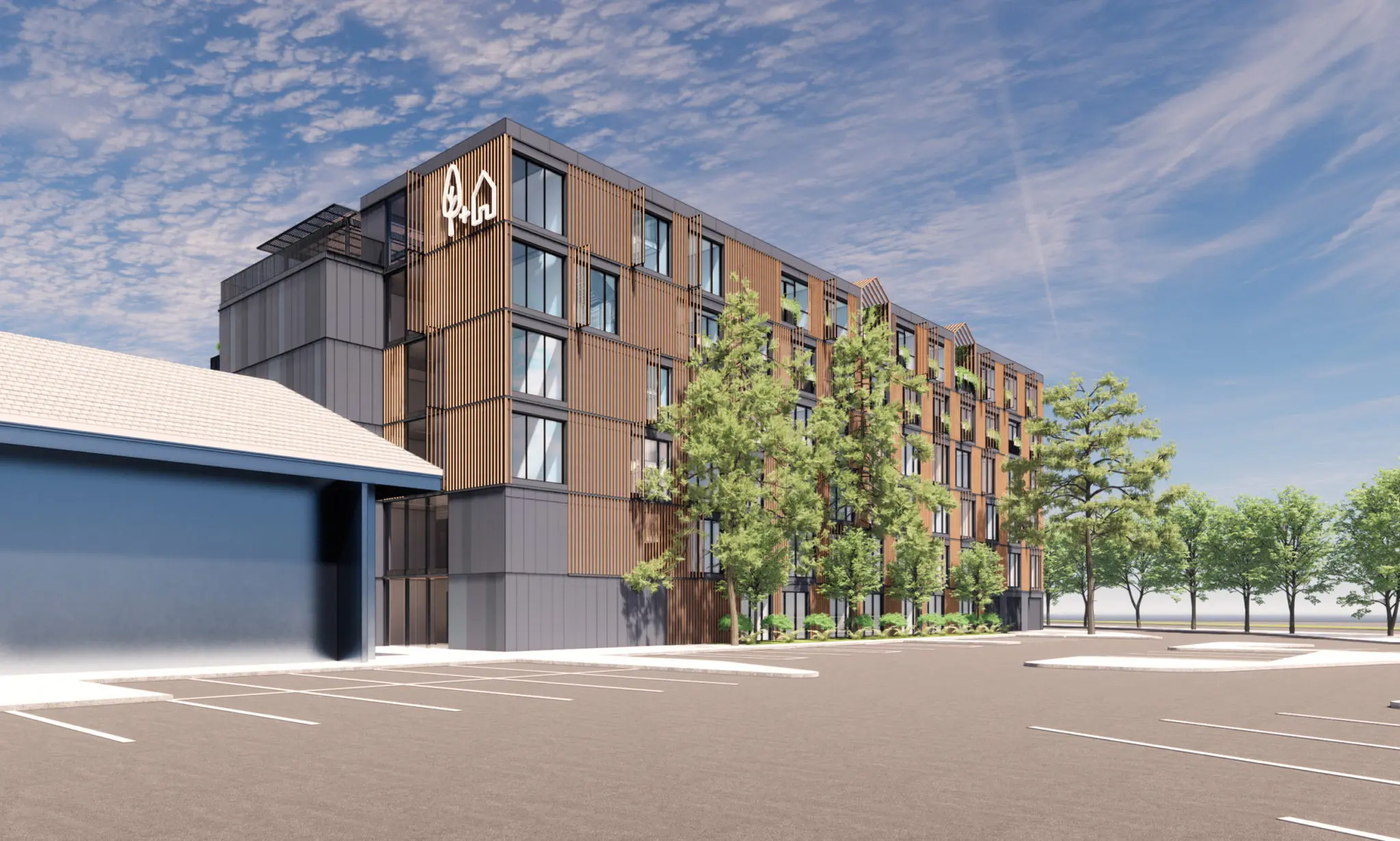
Steinberg Hart Treehouse Rendering, photo courtesy FullStack.
DI: Noble goals indeed. I wish you luck and continued success, sir.
RK: Thank you so much.
DI: It’s been fascinating to talk with you, Roger. I really enjoyed it. I hope I didn’t throw you any curveballs …
RK: I love curveballs if I can hit them.
DI: When you’re changing the game like you are, you must be hitting a few of them. Well done.
Roger Krulak is the founder and president of FullStack Modular, an award-winning, pioneering company at the forefront of mid- to high-rise modular construction. With an unwavering 35-year commitment to innovation and sustainable building practices, he has transformed the construction industry with his progressive approach to design and manufacturing. Recognizing the inefficiencies and environmental impact of traditional construction methods, Krulak set out to revolutionize the industry by leveraging modular construction techniques and founding FullStack Modular in 2016. Driven by his belief that modular construction holds the key to creating sustainable, affordable and high-quality buildings, Roger has established the company as a pioneer in using advanced technologies to elevate modular construction. Under his visionary leadership, the company has emerged as a leader in off-site modular construction. It has been recognized for forward-thinking solutions, including BuiltWorlds’ 2023 Building Tech Top 50 list, Civil + Structural Engineer’s 2023 Rising Stars, and Popular Mechanics’ 2014 Breakthrough Award. Significant development projects include Starwood Group’s first Treehouse Hotel in the U.S. in Sunnyvale, CA; 461 Dean Street — the tallest modular building in the Northern Hemisphere; the Grant Avenue Municipal Lot by New York City’s Department of Housing Preservation and Development (HPD) and many more.
An industry thought leader, Roger is a regular speaker at the country’s top design schools and universities, including New York Law School, MIT, Harvard and Yale, and with various industry organizations, including BuiltWorlds, Modular Building Institute and the NHP Foundation. He has been featured in top media outlets, including the New York Times, Wall Street Journal, Forbes, Fast Company and Wired. Before founding FullStack Modular, he was part of the leadership team at Forest City Ratner Companies (FCRC), where he spearheaded the company’s first R&D modular construction project in 2008. As SVP of modular construction and development, he focused on incorporating technology into construction workflows using modular building systems and oversaw construction of the world’s tallest volumetric modular building. Roger received his degree in Management and Organizational Psychology from Babson College and lives in Westchester, New York, with his family.
FullStack Modular is the leading modular innovator in the design, manufacture and construction of mid- and high-rise multifamily buildings, hotels and student housing in urban environments. Tech-driven, fully integrated, sustainable and radically efficient, FullStack Modular is revitalizing the urban housing landscape — taking modular design and construction to new heights.











